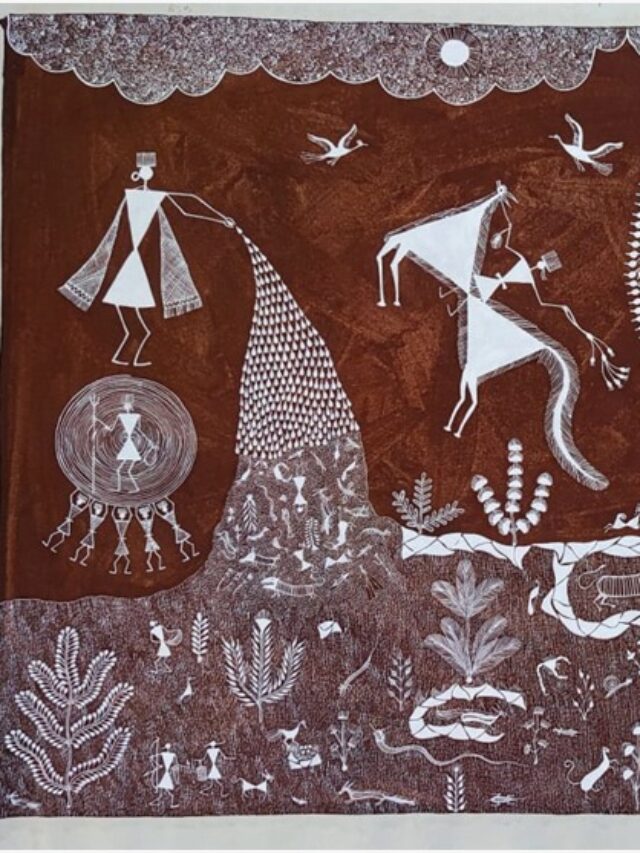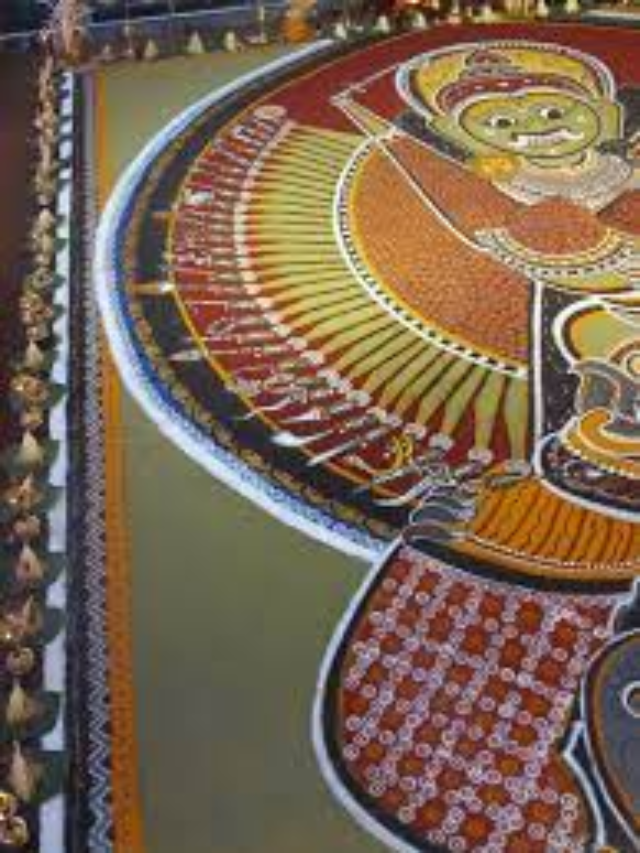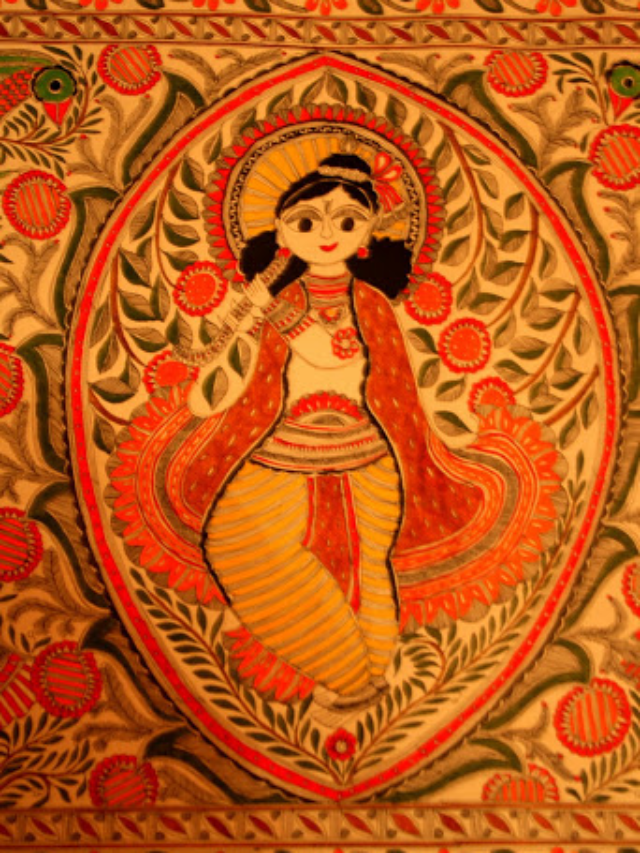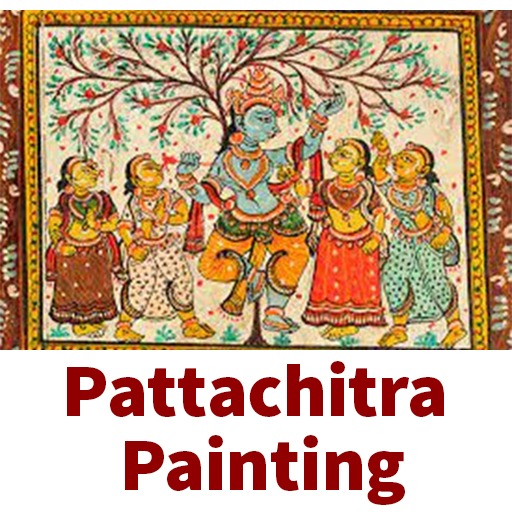What is Pattachitra Painting? Sanskrit gave rise to Pattachitra painting. Patta means fabric and Chitra means image when separated down into its two components. As a result, Pattachitra is a painting on a piece of cloth. This type of art is directly linked to Shri Jagannath’s religion and Puri’s temple traditions. It is among the most famous living forms of art, with people in Odisha still practicing it. It is thought to have begun in the 12th century. This tribal painting was created by Odisha. The themes are drawn from Hindu mythology, with a focus on Lord Jagannath and several aspects of Vaishnava worship.
Patachitra is a painting on canvas that is one of Odisha’s most famous forms of art. The hues are bright and vibrant, the patterns and designs are imaginative, the concepts shown are straightforward, and the story is based primarily on religious scriptures and epics. Patachitra painting artwork is believed to date back over a thousand years.


Chitrakar Community:
Almost the whole Chitrakar tribe is from Raghurajpur, a tiny town in the Puri district. That’s also India’s unique village in which each family participates in crafts such as Patta painting, stone carvings, wooden toys, and so on. The Chitrakar prepare the canvas for Pattachitra painting in a conventional fashion. White stone powders and tamarind seed gum are applied to a gauze-like fine cotton cloth. This prepares the canvas for the application of natural-color paint. Pattachitra is known for its vibrant colors. The main ingredient is kaitha tree gum, which is used as a basis for creating other colors by mixing in other raw materials. A powdered conch can be used to achieve a white hue.
History of Pattachitra Painting:
From the standpoint of the medium, Orissa paintings can be classified into three categories: paintings on fabric (‘Patta Chitra’), paintings on walls (‘Bhitti Chitra’), and palm leaves engravings. The (pattachitra) recalls old Odisha paintings, particularly those from Puri, Bhubaneshwar, and Konark, which date back to the fifth-century BC. The best work may be seen mostly around Puri, particularly in Raghurajpur town.
Meaning of Pattachitra:
Pattachitra, which means ‘cloth-picture’ in Sanskrit, is a broad term that refers to a painting format and style that originated in West and Odissa Bengal. Classical Indian arts and design and palm leave manuscripts illustrations to have strong technical and artistic connections to the centuries-old practice of artists known as chitrakaras. This style is characterized by a lack of stylistic recession, single-tone backgrounds, use of color, and a predominance of profile depictions. Warm palettes are also prevalent, with hand-mulled paints made with locally available plants and minerals pigments including chalk or powdered shell white, Indian yellow, charcoal base, indigo, and red lead.


Pattachitra Painting Preparation:
Preparing the (patta) is the first item on the agenda, and the artists, also known as chitrakars, begin by making tamarind paste, which is created by soaking the seeds of tamarind in water for four days. The seeds are then crushed, combined with water, and boiled in an earthen pot to make a paste known as Niryas Kalpa. The solution is then used to join two pieces of fabric together, and it is covered with a soft clay rock powder several times until it hardens.
After the cloth has dried, the finishing touch is to polish this with a hard stone or wood, till the surface is leathery and smooth, and it is prepared to be painted on. All of the colors used in the painting are organic, and they are created in an old-fashioned way by Chitrakaras.
Worship of God:
The town of Puri, which includes among the most important Hindu temples, Jagganath Temple, is regarded to be the origin of the pattachitra painting. Whenever the temple is closed, it is considered that painted images of the temple and its imagery on the fabric were used for worship. This custom quickly grew into a demand for Jagganath pattachitra, serving as a reminder and route for acts of worship. Pilgrims began to seek pattachitra depicting different gods and settings from Hindu mythology, scripture, and folklore.
Conclusion:
Several paintings represent images from the Krishna Leela, a dance in which gopis dance in a ring around Lord Krishna, who performs with his lover Radha in the center. Dasabatara Patti, which shows Lord Vishnu’s ten forms, is another popular one of Pattachitra paintings. Another famous Pattachitra painting is Panchamukhi Ganesha. It is a painting of Ganesha’s five-headed avatar, and hanging one in the house or office on the eastern side is considered a blessing.
For more posts like this visit Tribal Handcrafts blog.






